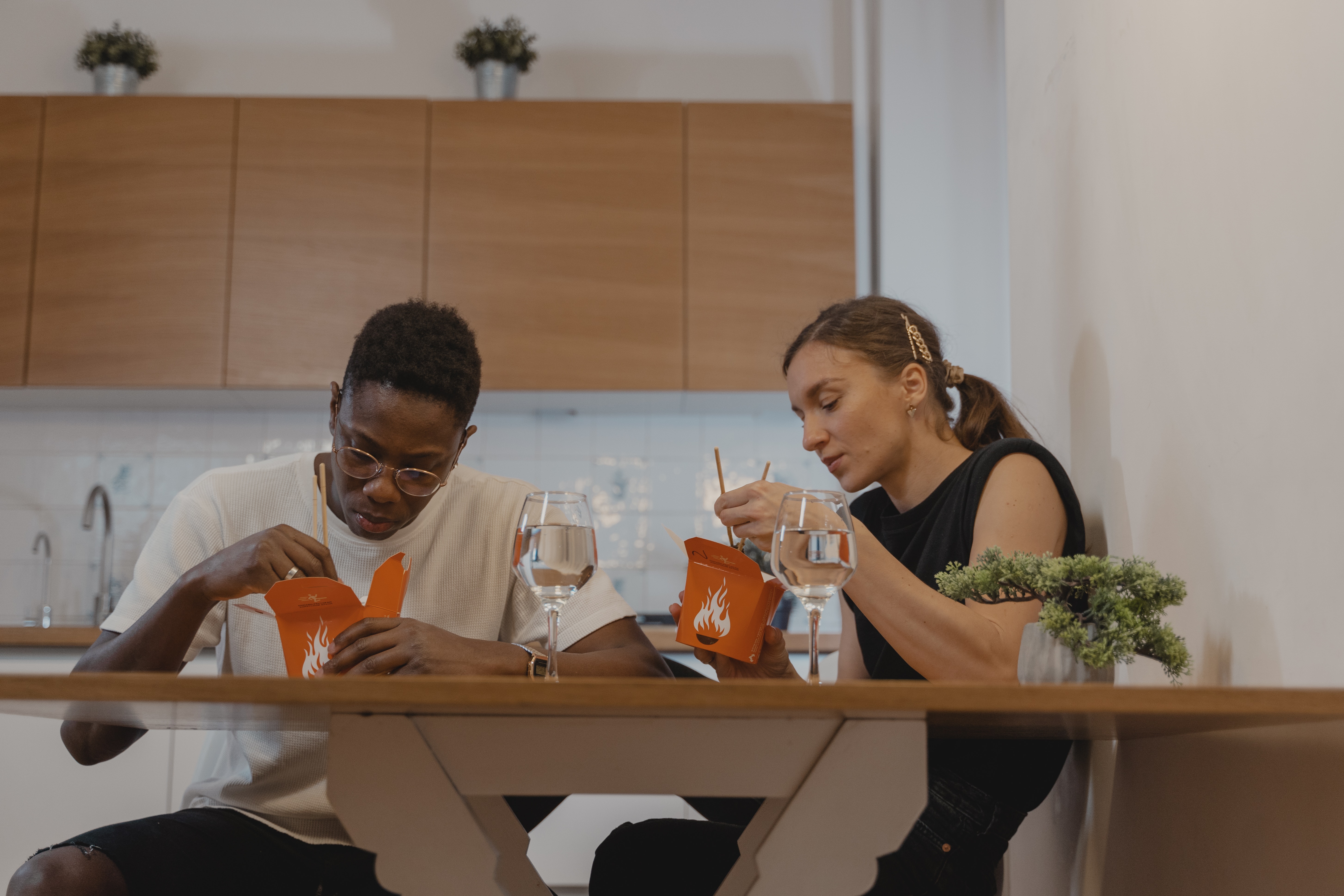Another Way To Think About a Ghost Kitchen
Imagine a strip mall with three businesses. Say for example all three are QSRs; Burger King, KFC, and Chipotle. Now imagine that we eliminated everything from each restaurant except for the kitchens. The only people who are permitted into these businesses are the kitchen staff, and delivery drivers who pick up the meals and deliver them to end customers. At a ghost kitchen, there is no dining area, no customer bathroom, no cash registers, no marketing materials, in fact, no customer interaction whatsoever. There is one more feature that really makes a ghost kitchen a ghost kitchen:
Let us imagine that you have ordered a meal for delivery through a restaurant’s app. Usually the first thing you select is the location, then dine-in, pick-up, or delivery. Once you select delivery you choose your menu items. If the restaurant also operates a ghost kitchen in your delivery zone, the app may kick your order to the ghost kitchen instead of to the location selected. You as the end customer would never know.
Why Would a Business Open a Ghost Kitchen?
One of the greatest challenges today for restaurants is managing multiple order streams. It has always been difficult enough to manage capacity between the inside cash register and the drive-thru line. Now we have the addition of web and phone orders (orders placed ahead of people physically waiting in line), and delivery. A ghost kitchen will completely remove the delivery stream from the equation. A restaurant can move 100% of its delivery business to a ghost kitchen. This adds capacity for relatively speaking a lower price than opening a second restaurant, while reducing wait times at the restaurant and for delivery.
A ghost kitchen will typically cost less than opening a second restaurant in a territory. For one thing, the square footage required will not include a dining area or customer facilities of any type. The number of staff required to operate will be lower. Properties can be smaller since they will not require customer parking. In short, the facility will cost less than the typical restaurant.
Good restaurant locations are based on high foot or automobile traffic. Stats like that come at a hefty price. A ghost kitchen on the other hand can be built in a light industrial space in hidden locations with little to no foot traffic. The cost to have a second kitchen for added capacity could be significantly less expensive than building a second restaurant while driving almost the same amount of revenue.
Cheap square footage can also mean a little extra space in the kitchen. When it comes to automation this can be very helpful.
Why Robotic Automation in a Ghost Kitchen Makes Sense
One of the biggest reasons that robotic automation in commercial kitchens has been slow to catch on is footprint requirements. It is not that the technology does not exist. Make a search of YouTube for “Food Factory” and you will see that the production of food and robotic automation have gone hand in hand for a very long time.
Why does robotic automation exist in food manufacturing but not restaurants?
There are many reasons, but for now we will focus on the reasons where a ghost kitchen could change everything.
Square Footage in a Ghost Kitchen
In the restaurant industry, square footage is everything. As discussed earlier in this article, real estate is expensive. In most kitchens, especially QSRs, there is not a single inch unaccounted for. Kitchen designers even work vertically, storing tools and supplies all the way to the ground and up to the ceiling. Robotic automation, for the most part has been developed for factories. Where most kitchens might be one-thousand square feet or less, a factory will easily be ten times that size or more. This means that automated food equipment designers have never been forced to work in very confined footprints. Most equipment is simply too big for the kitchen.
A ghost kitchen presents a unique opportunity. Where locations do not need to be on valuable real estate, designing a kitchen which is even up to twice the size may still be significantly less expensive to build and operate than a typical small footprint restaurant kitchen in a high traffic area. While kitchen automation continues to become more compact every day, a larger ghost kitchen will be much easier to implement kitchen robotics.
Fewer Staff Required in a Ghost Kitchen
Let’s face it, it is not getting any easier to staff kitchens. By automating as many tasks as possible in a ghost kitchen, the business will require fewer employees to turn out the same number of meals. This further reduces the cost to operate a ghost kitchen and add delivery meal capacity to an existing territory.
No Personal Interaction in a Ghost Kitchen
When I think of my favorite parts of a great dining experience, service is a key component. Specifically, the interactions and attention of servers and bar staff. When it comes to delivery meals, a customer has decided to forego this for the comforts and convenience of their own home.
While the human interaction remains a key part in the dining experience, it is not part of the delivery experience with the exception of the driver, often a third-party. In the case of delivery this is not to downplay the importance of good customer service. Online ordering apps, call centers, and drivers should still function properly, be cordial and timely. This however is totally independent of a ghost kitchen.
The ghost kitchen must simply perform the sole task of pumping out quality meals. This means that adding automation in places which may seem a little informal or impersonal do not matter for a ghost kitchen. If it helps decrease ticket times and keep staffing requirements low, then we say, bring on the automation in a ghost kitchen!
Robotic automation is slowly working its way into kitchens around the world. The ghost kitchen is a natural fit to push the boundaries on just how far a business can automate and mechanize.



